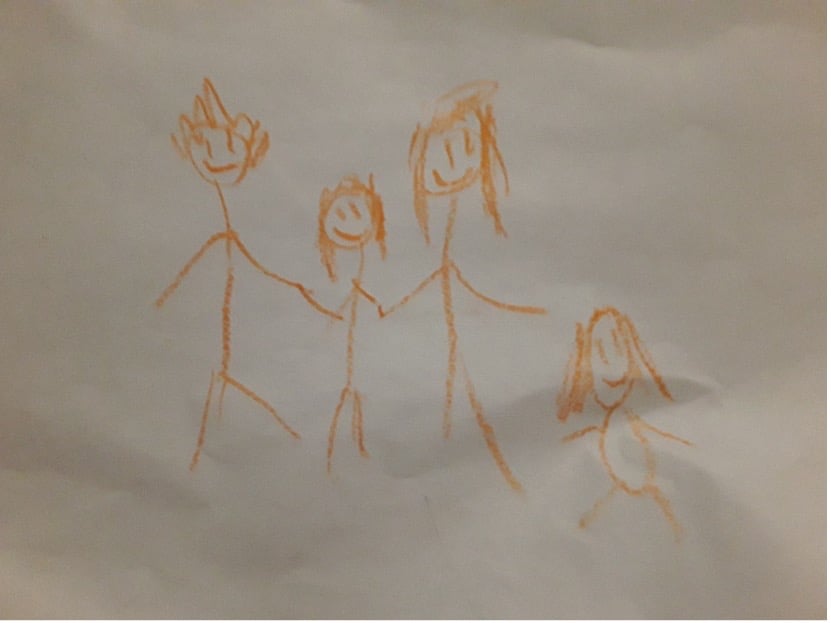
With everything that has happened in the last two years, educators have had to look at teaching in a whole new way. We have learned that the things we used to do for children who experienced trauma, now apply to all children.
If you are preparing for the new school year, a new child, or returning from remote learning, here are some ideas to help welcome your children in every morning. After all, when children feel safe and like they belong at school, they will be ready to learn!
Saying Hello with a Greeting Sign
The way we enter a room in the morning can often set our mood for the day. Imagine this scenario: You had a bad morning, and when you came into work, no one spoke to you or acknowledged your frown. You probably felt like no one noticed that you were feeling upset, which made you feel even more isolated. The rest of your day seemed to go downhill from there.
Now, picture coming into work after a bad morning and a coworker saying, “I’m so glad you are here today!” That small interaction helped shift your entire mindset making the rest of your day go smoothly.
Even as an adult hearing a caring voice can change our outlook. Our children need a reason to smile when they come to school too. We can help them with that.
They should always be met by a friendly face and feel welcome coming in. When greeting, it is important to ask the child and their family member how they are doing. Building a strong relationship starts with “Hello” and “How are you?”
Routines help children feel more comfortable in new environments. When they do the same thing every day it becomes less scary to them. This can start at the door. Allowing the children to choose how they greet you also helps them feel in control.
A greeting sign is easy to make and allows children flexibility and ownership of their morning greeting. You can use butcher paper, cardstock, a paper plate, or whatever fits in the space by your door. Choose greetings that would be fun for your children to use. Be sure to have pictures to go with the words.
Most greeting signs have around four choices. You don’t want to overwhelm your children. Design your sign in a fun way so your children are excited to pick a greeting when they come in.
Below are some ideas of what to include on your board for both schools that currently allow touching and those that don’t due to COVID-19. Be sure to follow the current rules and health guidelines for your school.
Schools that Allow Touching |
Non-Touch Schools |
|
|
Fostering Safety with a "We’re All Safe Today" Box
Another tactic to help children feel more welcome is We’re All Safe Today Box. While their parent or caregiver is still in the classroom, a child takes their name off a board and places it in the box. Some teachers have the children say, “I’m ready to be safe at school.” Some make a poem or phrase. Whatever you choose to have children say, be consistent each day. This routine signifies to the child that they will be safe at school.
You can create your box as creatively or simply as you like. Have the children decorate their item to represent them. You can also print out pictures of the children to use. Below is one example of a simple design.

Saying Goodbye to Adults in the Morning
Once the child has checked in with the We’re All Safe Today Box, it’s time to say goodbye to their families. For some children this may be particularly difficult. This is a great time to start another routine that will help ease their transition by including the family members in the goodbye ritual. Below are silly sayings that the children can say with them as they leave.
Child |
Adult |
| See ya later... | Alligator |
| In a while... | Crocodile |
| Out the door... | Dinosaur |
| Give a hug... | Ladybug |
| Take care... | Big Brown Bear |
There are many more out there that you can offer to families. Help them to understand that the importance of this activity is to develop a routine to help them leave. After they say their line the child will know they are leaving.
I had one student who had a hard time separating from his dad. They chose “Out the door, Dinosaur.” He would say “Out the door” and Dad would open the door and say “Dinosaur” in a deep voice as he stomped out the door.
Using a Family Tree throughout the Day
Even after a warm, welcoming drop-off, children may still feel homesick throughout the day. What can educators do to help? Since we can’t take them to their family, we can offer to bring their family to them. One way to do this is making a family tree.
Ask all families and teachers to send in a family picture before school starts or at drop-off. Laminate each picture and put Velcro on the tree and the back of the picture, so they can be removed any time a child needs it.
In one of my educator friend’s class, 90% of his students are in some type of placement that is not with their biological parents. I asked him how he handled his family tree. He told me it was a problem at first because some children were in a new placement, and they may not yet feel safe with those caregivers. So, he decided to have all his children draw their family. He still laminates each drawing and puts the Velcro on the back.
He never asks who is in the picture in case children aren’t comfortable talking about difficult situations such as if a parent is in prison, or if they choose not draw biological parents.

Once the Family Tree is up, explain to that they can bring the pictures to their friends when their friends seem sad. Even non-verbal children can show empathy towards their friends in this way. You can even add that it’s important to help our friends feel better even when you may not know the cause of their sadness.
What other ways do you welcome students into your room? How do you help young children feel welcomed, safe, and ready to learn?
 Samantha Rohwer has been teaching since 2001 and has taught Infants to 2nd grade. She loves the world of early childhood and helping teachers and families explore new ways of helping children grow. After adopting two daughters, she started researching trauma and its impacts on children and how that affects us as teachers. Samantha feels we are all lifelong learners and the more we learn the more we have to share with our students!
Samantha Rohwer has been teaching since 2001 and has taught Infants to 2nd grade. She loves the world of early childhood and helping teachers and families explore new ways of helping children grow. After adopting two daughters, she started researching trauma and its impacts on children and how that affects us as teachers. Samantha feels we are all lifelong learners and the more we learn the more we have to share with our students!

